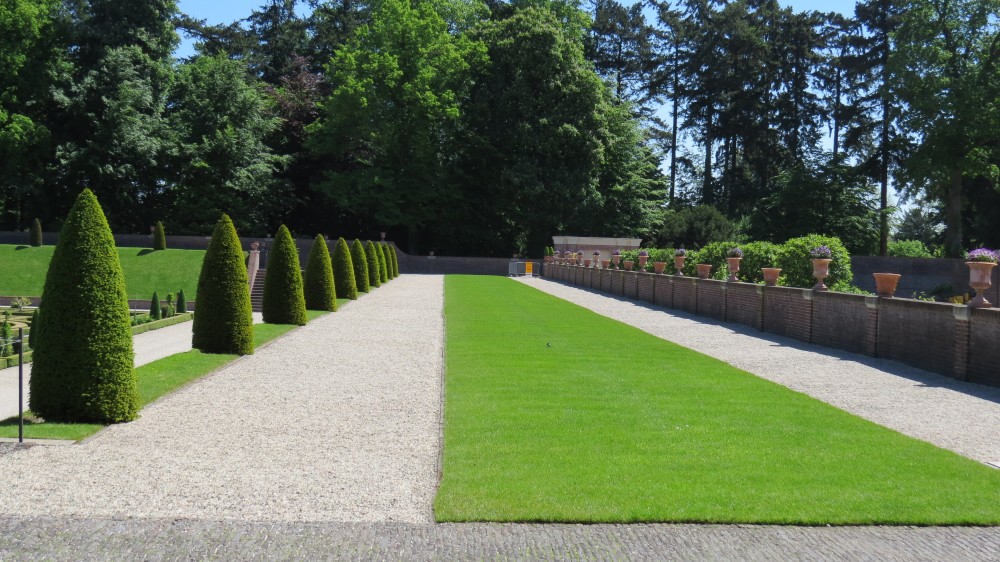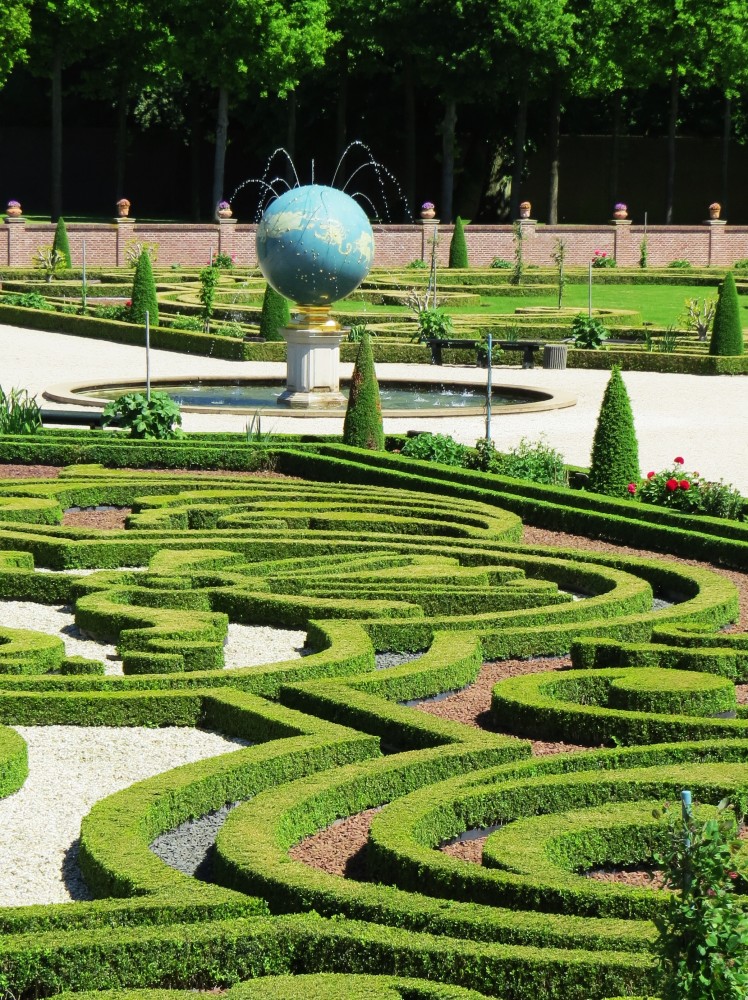When it comes to garden history and garden conservation; I am a lightweight. I am more interested in the feel of a garden, than the conservation of a broken down bit of wall with an empty plinth where a marble urn once stood, before the owner met with hard times. Knowing that Het Loo was a garden of the late 17th century reconstructed from scratch between 1977 and 1984, I was excited to see it, and what a surprise; it gave me a different understanding of gardens of the Baroque age.
A comparison with 17th century Versailles, built around the same time is inevitable, but nothing explains better the difference between the centralised autocratic monarchy of Louis XIV, and William of Orange’s precarious position as Stadtholder (- an appointed head of state) of the embryonic Dutch democracy. Louis moved the government of France, the European super-power of its time to Versailles, whereas Het Loo was literally the ‘Palace in the Woods’, the hunting retreat of a powerful oligarch. Over the preceding two centuries, the Dutch had learnt to work with nature, (something I often think the French have yet to do) rather than see it as a force to be dominated and subdued. Het Loo, both house and baroque garden have a domestic, human scale, despite their grandiose embellishments by Huguenot architect, Daniel Marot.
Here is a reconstruction built from scratch with new brick walls and steps, jardinières, fibreglass copies of missing urns, new trelliswork, fountains and cascades. Pastiche? Yes, but historically true to the spirit of the age; I think there is a place for pastiche, just as there is one for loving conservation of something unrecognisable to anyone but a garden historian.
From the front south courtyard of the palace, a pate d’oie (goosefoot) of three fairly modest beech avenues radiates out. The formal entrance to the gardens at the rear of the palace is through gilded gates on the raised ground floor, and to the west side is the King’s Garden, a bowling green, to the east the Queen’s Garden, where the arched tunnel of hornbeams provided a degree of privacy. Ahead lies the Lower and Upper Gardens separated by two small canals, and dividing rows of oaks with high pruned canopies; providing subtle enclosure without obscuring the visual link between the two gardens. Nothing could be more different from the endless vistas of Versailles.
The Lower Garden is overviewed by a broad raised promenade to the three remaining sides, punctuated by precisely clipped yew topiary pyramids, and with ornate trelliswork and cascades. Water is everywhere in the garden – rills with rows of small fountains, delightful small cascades down the sides of steps, grand cascades, tranquil canals under the rows of oaks, grand fountains with fine marble and gilt sculptures, and the bizarre raised terrestrial and celestial globes.
I have never before found parterres visually exciting, and this was for me Het Loo’s biggest surprise. There is a modest minimalism to the ornate pattern of box hedges, lawns, and beds of small grey/black gravel, black slate shale and crushed red granite, that Versailles does not have with its vast parterres and succession of seasonal mass plantings. Flowers at Het Loo are sparsely planted in narrow beds alongside the paths.
The Upper Garden does not work as well, partly because mature trees have been retained, but the central feature, the 13 metre high King’s Fountain provides a strong focal counterpoint. At the end of the garden, behind the fountain is, to my mind, the least satisfactory reconstruction at Het Loo; the half-round classical and gleaming white brash stone Colonnade. I doubt that the meticulous Dutch will allow it to develop a patina and age gracefully………..
As a somewhat jaded garden visitor, it is exciting to come across a garden that changes my perceptions. Het Loo, besides being Holland’s finest garden, does just that.
Where: Paleis Het Loo, Koningklijk Park 1, 7315 JA, Apeldoorn, Netherlands
Details: www.paleishetloo.nl
| Setting | 2 | Interest for Children | 2 |
| Concept | 5 | Accessibility | 4 |
| Design Execution | 4 | Cafe | 5 |
| Hard Landscaping | 5 | ||
| Planting | 3 | ||
| Garden | 24/30 | Facilities | 11/15 |








